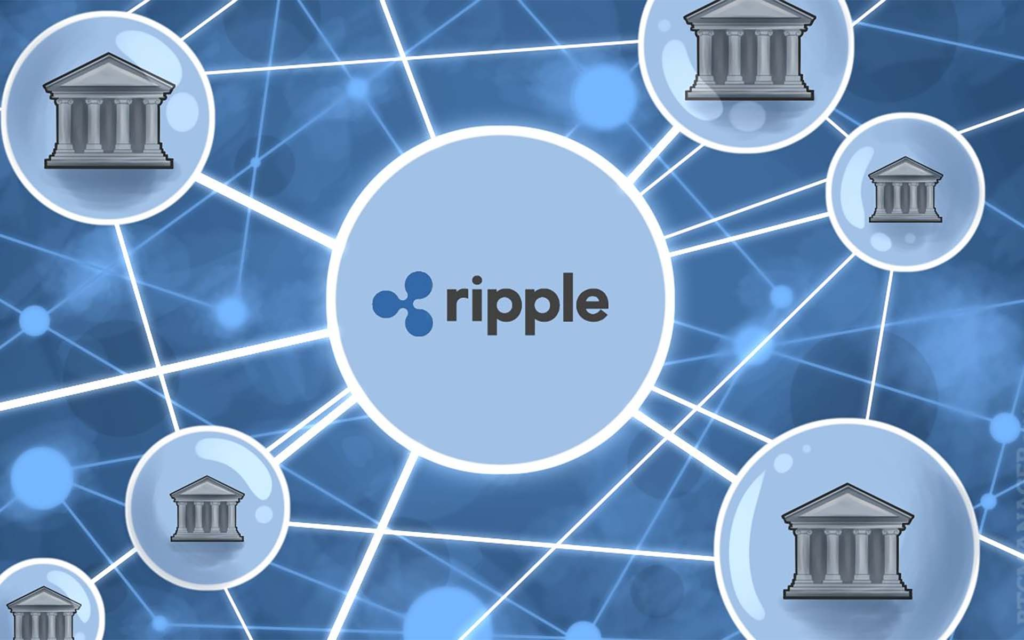TL:DR;
- Ripple has positioned itself to be a dApp for central banks.
- Central banks will use one network – the RippleNet.
- Ripple is enabling banks to go digital through xCurrent (for real-time payment systems, xRapid (for sourcing On-Demand Liquidity), and xVia (for sending global payments with a single Integration).
What is Ripple?
Ripple is a cryptocurrency network that facilitates exchanges between banks and cryptocurrencies. You can exchange any asset without necessarily using XRP. However, XRP is a transaction medium between banks and digital currencies in the Ripple Network.
The network aims to replace the SWIFT banking network. SWIFT stands for (Society for Worldwide Interbank Financial Telecommunication). It is a traditional international cross-border transfer system.
Ripple aims to make international currency exchanges cheaper, faster, and more reliable. The company uses its products, such as Interledger Protocol, Ripple Protocol, RippleNet, and XRP Ledger, to achieve this goal.
What Is the Role of XRP?
Existing cross-border transfers occur between systems that are not fully connected. The systems have intermediaries that charge fees, making the process costly. However, Ripple uses an interconnected ledger with no intermediaries, making transactions cheaper.
XRP, Ripple’s crypto coin, plays a crucial role in the transactions. It functions like the US Dollar, a medium of exchange between different currencies.
Ripple has several use cases: International Supply Chain Payments, Real-time Cash Pooling, Global Currency Accounts, International Bill Pay, e-invoicing, Real-Time Remittances, and International P2P Payments.
How Does Ripple Help Banks to Go Full Digital?
XRP has three critical systems that help banks to go full digital:xCurrent, xRapid, and xVia
- xCurrent – Make Real-Time Payments
xCurrent helps banks process real-time payments. Here, Ripple installs its software within the bank’s infrastructure. The software uses an API interface or a translation layer to interface with traditional payment systems. The translation layer consumes traditional payment message formats and compresses the integration time frame into weeks.
This facilitates fast cross-border transactions with little cost. Therefore, banks can stand out by offering cross-border transactions cheaper, attracting more users. The solution meets the banks’ needs, thereby minimizing risks and providing information security frameworks and compliance.
- xRapid – On-Demand Liquidity
xRapid enables banks to minimize liquidity and improve customer experience. xRapid uses XRP as a digital asset to enable real-time payments in emerging markets by lowering costs. Emerging markets require the use of local currency globally. People from different nations want to exchange currency, but the liquidity costs are usually very high. xRapid helps to lower these liquidity costs by using it as a medium of exchange.
Banks use XRP to transact between two fiat currencies. How? A bank purchases XRP using fiat of equal value and converts the XRP to another fiat currency. The bank then sends it through Ripple’s Network. xRapid is ideal for banks that have no associations.
The network even coins the process with “third-party liquidity provisioning.” Why use XRP instead of the US Dollar? This is because XRP is faster and cheaper. Banks can also source liquidity on demand, escaping Nostro accounts.
- xVia – Make Global Transactions using a Simple API
xVia uses a standard interface with a simple API that enables users to transact globally. The API requires no software installation and allows for transparency. It also attaches invoices and other necessary documents to the transactions. xVia is best for financial institutions and banks that want to make cross-border transactions across different networks using a standard interface.
Ripple Going Public With CBDCs in 2023
In 2021, Ripple started a private ledger to help it issue CBDCs. The platform was powered by XRP Ledger and built on a new private ledger. On the 18th of May, 2023, Ripple officiated a platform to allow banks to go digital. The Central Bank Digital Currency (CBDC) allows financial institutions to issue digital currency.
The processes involved in issuing CBDCs are minting, burning, redistribution, and redemption, all of which the banks will be able to perform. Ripple allows the banks to issue wholesale and retail CBDCs, qualifying for offline transactions like fiat.
The Network even planned to showcase the use of its platform in a program run by Hong Kong’s de facto central bank, the Hong Kong Monetary Authority. The Network also plans to partner with another bank, Taiwan’s Fubon Bank, to create a product for equity distribution and real estate tokenization. These are all under the e-HKD pilot program.
List of Banks Using XRP to Go Digital
There are over 200 banks that have adopted the use of Ripple as CBDCs. Here is a list of some of the banks:
- MUFG
- Santander (USA)
- BBVA
- Canadian Imperial Bank of Commerce (Canada)
- Kotak Mahindra Bank (India)
- SEB
- BeeTech(Brazil)
- Akbank
- Zip Remit (Canada)
- Axis Bank
- IFX (U.K.)
- YES BANK
- Siam Commercial Bank (Thailand)
- SBI Remit
- Currencies Direct (U.K.)
- Cambridge Global Payments
- SEB (Sweden)
- Star One Credit Union
- Krungsri(Thailand)
- EZForex.com
- Itaú Unibanco (Brazil)
The list varies from small to international banks.
What are The Risks Involved?
However, there are risks involved. Using XRP as a bridge means banks depend on Ripple for transaction liquidity. This demand and supply affect transfer value, putting XRP at an external risk. Considering the volatile nature of the cryptocurrency markets, a sudden rise or collapse in XRP could block transactions. This could lead to an increase or decrease in XRP’s value.
These fluctuations caused the SEC to sue Ripple for market manipulation in 2020. As a result, Chris Giancarlo, the Commodity’s Futures Trading Commission Chair, argued that XRP does not fit Howey’s test and, hence, should not be termed as a security offering.
Closing Thoughts
Many banks are adopting digital currencies in the form of CBDCs. Central Bank Digital Currencies (CBDCs) are digital currencies issued by a nation’s central bank. In partnership with XRP, this reality becomes possible. XRP makes it easier for banks to migrate into cryptocurrency without going through many legal processes. Even large banks in the USA, China, and Korea fully support XRP.



